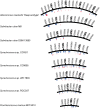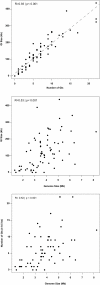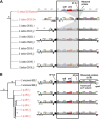Patterns and architecture of genomic islands in marine bacteria
- PMID: 22839777
- PMCID: PMC3478194
- DOI: 10.1186/1471-2164-13-347
Patterns and architecture of genomic islands in marine bacteria
Abstract
Background: Genomic Islands (GIs) have key roles since they modulate the structure and size of bacterial genomes displaying a diverse set of laterally transferred genes. Despite their importance, GIs in marine bacterial genomes have not been explored systematically to uncover possible trends and to analyze their putative ecological significance.
Results: We carried out a comprehensive analysis of GIs in 70 selected marine bacterial genomes detected with IslandViewer to explore the distribution, patterns and functional gene content in these genomic regions. We detected 438 GIs containing a total of 8152 genes. GI number per genome was strongly and positively correlated with the total GI size. In 50% of the genomes analyzed the GIs accounted for approximately 3% of the genome length, with a maximum of 12%. Interestingly, we found transposases particularly enriched within Alphaproteobacteria GIs, and site-specific recombinases in Gammaproteobacteria GIs. We described specific Homologous Recombination GIs (HR-GIs) in several genera of marine Bacteroidetes and in Shewanella strains among others. In these HR-GIs, we recurrently found conserved genes such as the β-subunit of DNA-directed RNA polymerase, regulatory sigma factors, the elongation factor Tu and ribosomal protein genes typically associated with the core genome.
Conclusions: Our results indicate that horizontal gene transfer mediated by phages, plasmids and other mobile genetic elements, and HR by site-specific recombinases play important roles in the mobility of clusters of genes between taxa and within closely related genomes, modulating the flexible pool of the genome. Our findings suggest that GIs may increase bacterial fitness under environmental changing conditions by acquiring novel foreign genes and/or modifying gene transcription and/or transduction.
Figures










References
-
- Kettler GC, Martiny AC, Huang K, Zucker J, Coleman ML, Rodrigue S, Chen F, Lapidus A, Ferriera S, Johnson J, Steglich C, Church GM, Richardson P, Chisholm SW. Patterns and implications of gene gain and loss in the evolution of Prochlorococcus. PLoS Genet. 2007;3(12):e231. doi: 10.1371/journal.pgen.0030231. - DOI - PMC - PubMed
Publication types
MeSH terms
LinkOut - more resources
Full Text Sources
Molecular Biology Databases

